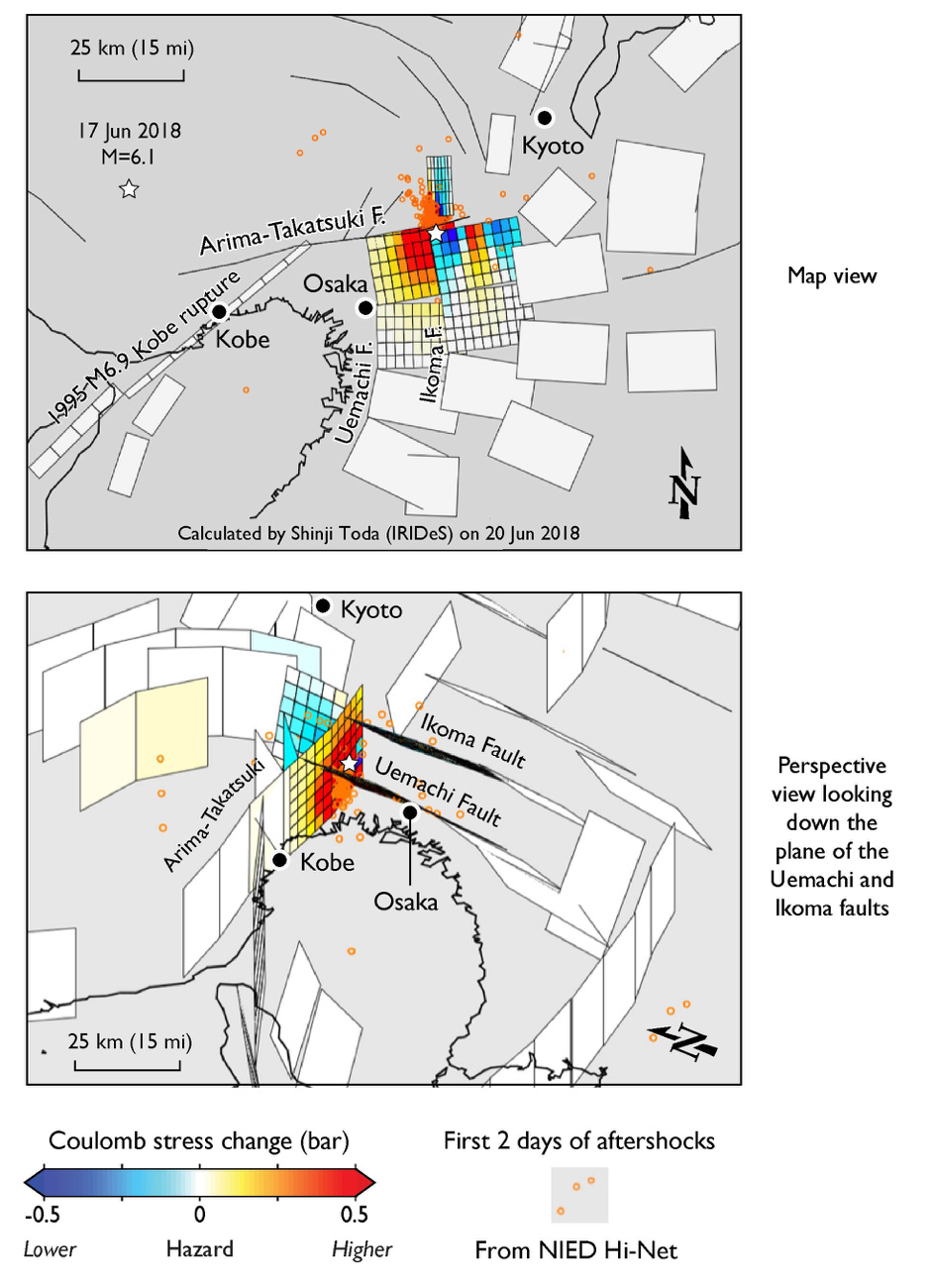By Shinji Toda, Ph.D., IRIDeS, Tohoku University, and Ross Stein, Ph.D., Temblor
The 17 June 2018 M=6.1 earthquake (now upgraded from M=5.9 by JMA) that struck 15 km (9 mi) northeast of Osaka continues to produce aftershocks and raise concerns about whether it could trigger larger earthquakes on either of two major active faults. Ruptures on either fault could strongly shake Osaka, a vibrant city of 2.7 million inhabitants.

Two major faults in play
We made preliminary calculations of the stress imparted by the M=6.1 quake to surrounding faults, with each fault divided into patches so the variation of stress could be resolved. This reveals that parts of the right-lateral Takatsuki Fault (also known as the Arima-Takatsuki Tectonic Line), and the Uemachi thrust fault, were brought significantly closer to failure. The Takatsuki fault was also strongly loaded by the 1995 M=6.9 Kobe earthquake to the southwest. The Uemachi fault cuts right through Osaka, and so is the most dangerous to the City.

Faults loaded by the amount of stress transferred by the M=6.1 shock can rupture immediately, or they could remain locked for many decades. We can say only that the effects of the stress increase will fade over several decades, so its impact is greatest now. Stress increases of this amount generally produce aftershocks, and so aftershocks on adjacent faults would provide an independent test of the calculation, which is being pursued.
Why does this matter?
On 15 April 2016, a M=6.2 earthquake struck near the city of Kumamoto, Japan. Preliminary Coulomb stress calculations suggested that the Futagawa Fault to the northeast, and the Hinagu Fault to the southwest, were both loaded by an amount the same or perhaps twice the amount that occurred in Osaka. A little over a day later, both faults ruptured together in a M=7.0 shock that took 50 lives and injured 3,000 people. Severe damage occurred in the Kumamoto and Oita Prefectures, with numerous structures collapsing and catching fire. More than 44,000 people were evacuated from their homes due to the disaster.

We want to stress that no large earthquakes are interpreted or known to be imminent, but the possibility of larger shocks cannot be dismissed. So, this is a moment for situational awareness and thoughtful precautions by the residents of greater Osaka.

Sources
JMA
NIED Hi-Net
Active Fault Database of Japan, https://gbank.gsj.jp/activefault/
Toda S., H. Kaneda, S. Okada, D. Ishimura, and Z. Mildon, Slip-partitioned surface ruptures for the Mw 7.0 16 April 2016 Kumamoto, Japan, earthquake, Earth, Planets and Space, 68, 188, doi: 10.1186/s40623-016-0560-8
Coulomb 3.3 software, https://pubs.usgs.gov/of/2011/1060/
- Earthquake science illuminates landslide behavior - June 13, 2025
- Destruction and Transformation: Lessons learned from the 2015 Gorkha, Nepal, earthquake - April 25, 2025
- Knock, knock, knocking on your door – the Julian earthquake in southern California issues reminder to be prepared - April 24, 2025
